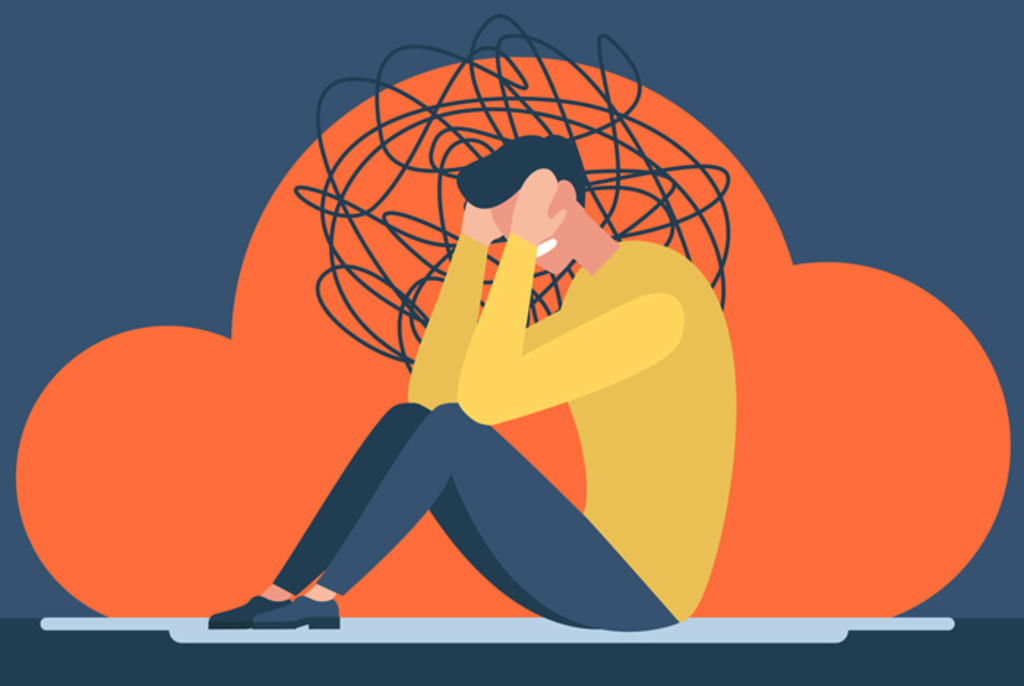TRAUMA AND ADDICTION
J.R.R. Tolkien, Trauma, and the Nature of PTSD

# J.R.R. Tolkien, Trauma, and the Nature of PTSD
Many are familiar with J.R.R. Tolkien through his monumental works, "The Hobbit" and "The Lord of the Rings." However, fewer know about the profound experiences that shaped his life and writing. Tolkien was an English World War I veteran who enlisted with a sense of duty. He endured the harrowing Battle of the Somme, suffering immense shock, guilt, and loss. These experiences deeply affected him and took years to process. To cope, Tolkien turned to writing fiction, creating a world that allowed him—and his readers—to better understand war, human nature, loss, and growth. His novels are enduring testaments to the impact of trauma and the potential for recovery and growth.
Trauma is an almost universal experience, and most of us will encounter some form of it in our lives. Typically, the symptoms of trauma fade over time. However, for some, these reactions can persist and disrupt daily life, leading to psychological disorders such as post-traumatic stress disorder (PTSD). This condition can also result in harmful coping mechanisms like addiction. Yet, as Tolkien’s story illustrates, there is also the possibility of post-traumatic growth—an opportunity to harness the effects of trauma and transform them into something meaningful.
PTSD is characterized by a range of symptoms that can severely impair an individual's ability to function. Historically known as "shell shock" in the context of World War I veterans, PTSD is now understood as a psychological disorder resulting from witnessing or experiencing traumatic events. According to the Diagnostic and Statistical Manual of Mental Disorders, Fifth Edition (DSM-5), PTSD symptoms fall into four main clusters.
The first cluster involves re-living the traumatic event through intrusive memories, nightmares, or flashbacks. The second cluster centers on avoidance—avoiding situations, activities, or people that trigger memories of the trauma. The third cluster includes symptoms of heightened arousal, such as a racing heart, muscle tension, irritability, and sleep disturbances. The fourth cluster involves pervasive negative changes in thoughts and mood, such as feelings of guilt, fear, shame, or a loss of interest in previously enjoyable activities. PTSD patients may also experience emotional numbing, dissociation, or feeling as if situations are unreal.
Untreated PTSD can lead to significant suffering and dysfunction. To cope, some individuals may turn to substance abuse, a common but ultimately harmful strategy. Data from the U.S. Department of Veterans Affairs indicates that over 20% of veterans with PTSD also struggle with substance abuse. Similarly, around one-third of women in treatment for substance abuse have experienced rape or sexual assault. The co-occurrence of PTSD and addiction often necessitates dual diagnosis treatment, addressing both conditions simultaneously.
Historically, PTSD has been understood through the lens of fear conditioning—an unshakable memory of being in mortal danger and the learned responses to that memory. However, contemporary perspectives recognize that PTSD can also result from moral injury. This form of trauma arises not just from violence experienced but also from actions taken or not taken that conflict with an individual's moral beliefs.
Consider Brandon, a combat drone operator who served for six years. Despite being physically distant from the battlefield, Brandon was diagnosed with PTSD. He experienced the same intrusive memories, nightmares, depression, anxiety, and substance abuse as ground soldiers. His story exemplifies that trauma and PTSD are not confined to traditional combat roles; they can affect anyone exposed to traumatic experiences.
Why do some trauma survivors develop PTSD while others do not? The answer lies in a complex interplay of genetic, environmental, and psychological factors. Some individuals may have a genetic predisposition to PTSD, making them more vulnerable. Additionally, context and environment play crucial roles. For instance, someone who has experienced childhood abuse may have a heightened ability to handle trauma but also a propensity for avoidance behaviors that exacerbate PTSD symptoms.
Neuroscientific research reveals that PTSD shares similarities with anxiety disorders. The brain's limbic system, particularly the amygdala and hippocampus, plays a critical role in the body's stress response. Trauma can lead to an overactive limbic system, flooding the body with stress hormones like cortisol. This prolonged stress response can damage the hippocampus, affecting memory consolidation and leading to vivid, persistent memories of the traumatic event.
Despite the severe impact of PTSD, there is hope for recovery and growth. Treatment and social support can facilitate post-traumatic growth, where individuals experience positive psychological changes following trauma. Tolkien's journey illustrates this potential. His experiences of trauma on the battlefield were transformed into powerful, allegorical stories that resonated with readers worldwide. This transformation highlights that, while trauma can cause significant suffering, it can also lead to profound personal growth.
Addiction, often intertwined with trauma, is another complex condition. Psychologists define addiction as compulsive, excessive, and difficult-to-control substance use or behavior that interferes with daily life. This can include drug and alcohol use, gambling, overeating, and other behaviors. Addiction may involve physical dependence, characterized by withdrawal symptoms, or psychological dependence, where the behavior alleviates negative emotions.
Addiction is frequently stigmatized as a lack of self-control. However, it is often a maladaptive coping mechanism for underlying stress and psychological problems. Individuals may turn to substances or behaviors because they lack healthier coping strategies. Recovery from addiction is challenging and varies among individuals. Some need complete abstinence, while others may regain control and use substances in moderation. Support from professionals or support groups can be crucial for many.
Researchers debate whether addiction is a mental illness or a physical disease, or both. Regardless, it is clear that addiction often requires dual diagnosis treatment when rooted in deeper psychological issues like PTSD. Addressing both the addiction and the underlying trauma is essential for effective recovery.
In conclusion, while PTSD and addiction can be distressing and complex, people have a remarkable capacity for resilience and recovery. With the right support and treatment, individuals can overcome significant challenges. As Tolkien’s journey shows, trauma can be transformed into something meaningful, offering hope and healing to others.
About the Creator
Enjoyed the story? Support the Creator.
Subscribe for free to receive all their stories in your feed. You could also pledge your support or give them a one-off tip, letting them know you appreciate their work.





Comments
There are no comments for this story
Be the first to respond and start the conversation.